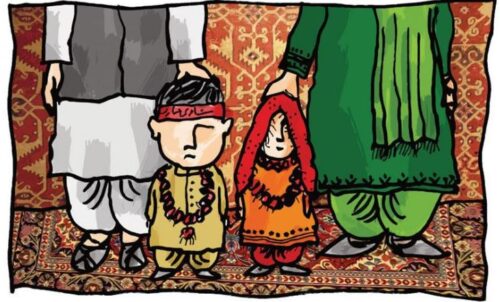CHILD MARRIAGE: LEGAL IMPLICATIONS AND HUMAN RIGHTS CONCERNS
Child Marriage: Legal Implications and Human Rights Concerns
Child marriage is a grave violation of human rights that continues to persist in many parts of the world, despite global efforts to eradicate it. This practice not only hampers the physical and emotional development of young individuals but also poses severe legal and ethical dilemmas. The intersection of cultural traditions, socio-economic factors, and legal frameworks often complicates the fight against child marriage, making it essential to address both its legal implications and human rights concerns.
Legal Frameworks and Age of Consent One of the primary challenges in combatting child marriage is the absence of a consistent legal framework across different jurisdictions. Laws regarding the minimum age of marriage vary widely from country to country, with some allowing marriage at shockingly young ages. These legal discrepancies perpetuate the cycle of child marriage and hinder the protection of vulnerable children.
International human rights standards, such as the United Nations Convention on the Rights of the Child (CRC), advocate for setting the minimum age of marriage at 18 years for both genders. However, the implementation of such standards at the national level remains inconsistent. Child marriage often persists due to weak enforcement of existing laws, lack of birth registration, and societal norms that prioritize tradition over the well-being of children.
Impact on Human Rights Child marriage has far-reaching consequences that violate a range of human rights. Firstly, the right to education is compromised as young girls, who are disproportionately affected, are forced to drop out of school to fulfill domestic roles as wives and mothers. This perpetuates the cycle of poverty, as education is a key driver of socio-economic development.
Secondly, child marriage infringes upon the right to health. Early pregnancies expose young girls to increased health risks due to their bodies not being fully developed to bear children. Maternal mortality rates are higher among child brides, and their offspring often face health complications as well.
Moreover, child marriage denies individuals the right to choose their partners freely. Consent is often absent in these marriages, leading to situations of forced labor, sexual exploitation, and domestic abuse. These circumstances lead to a cycle of disempowerment, further marginalizing already vulnerable populations.
Legal and Social Challenges Eradicating child marriage requires a multifaceted approach. Legal reforms aimed at raising the minimum age of marriage and ensuring rigorous enforcement are crucial steps. However, altering deeply ingrained cultural norms is equally important. Engaging communities, religious leaders, and educational institutions to challenge harmful practices and promote gender equality can contribute to lasting change.
Investing in education, particularly for girls, plays a pivotal role in dismantling the structures that perpetuate child marriage. Education equips girls with knowledge, skills, and confidence to make informed choices about their lives and futures.
International Cooperation and Accountability Addressing child marriage necessitates international cooperation and accountability. Governments, non-governmental organizations (NGOs), and international bodies must collaborate to share best practices, provide support to affected communities, and put pressure on nations where child marriage persists.
Legal reforms should be coupled with awareness campaigns to highlight the detrimental effects of child marriage on individuals, communities, and societies at large. Social media, public events, and grassroots initiatives can work together to change societal attitudes and promote gender equality.
In conclusion, child marriage is a complex issue that involves legal, cultural, and human rights dimensions. To effectively combat this practice, nations must work together to establish consistent legal frameworks, promote education and awareness, and challenge harmful traditions. Only through a concerted effort can we ensure that the rights and well-being of all children are protected, allowing them to grow into empowered adults capable of shaping a brighter future.


